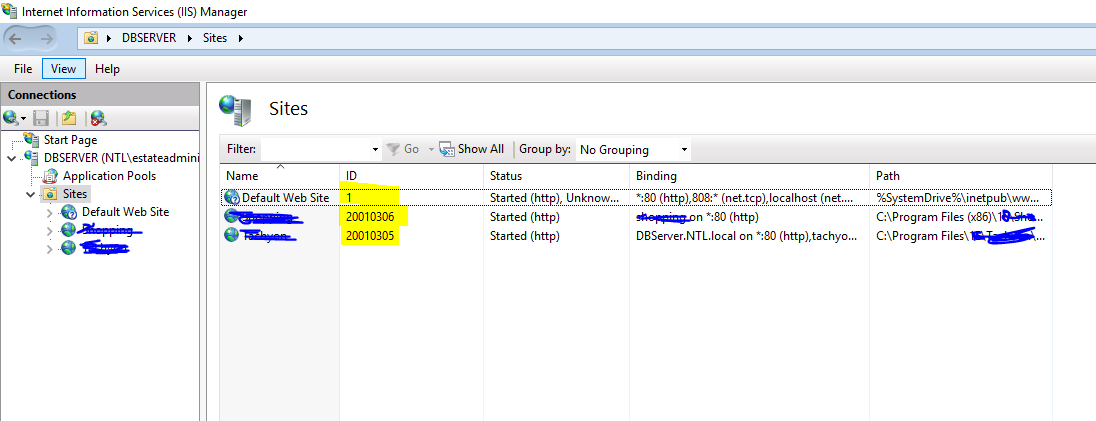There are multiple web sites and multiple folders under inetpub\logs\LogFiles (W3SVC1, W3SVC2, etc). How can I find what folder is used by a given web site?
Ok, I've found this property - it's called "site id" and resides in "Advanced Properties" of the website.
'Open IIS manager, click on the top level websites folder, view the lists of sites in the right hand pane, listing the App ID's.'
We can also get it using command line :
C:\>%windir%\system32\inetsrv\appcmd list site
The output would be like below:
SITE "Default Web Site" (id:1,bindings:HTTP/*:80:,state:Started)
SITE "Site1" (id:2,bindings:http/*:81:,state:Started)
The id field corresponds to the id found in log files. inetpub\logs\LogFiles (W3SVC1, W3SVC2
You can find from website properties of IIS manager. With IIS 6 the Web Site ID is a randomly generated number for each site that is created other than the Default Web Site which has an Web Site ID of 1.
For example:
- W3SVC1
- W3SVC719499532
- W3SVC383732556
Knowing which web site these being to is a problem as it requires you to manually look at each web site. The following VB script will allow you to output the ID and name.
Save the script to a file with a .VBS file extension and then run using this command (for IIS 6).
cscript MyFile.VBS
Function ProcessWebSite(ServiceType, SiteNumber)
Set IISWebSite = getObject("IIS://localhost/" & ServiceType & "/" & SiteNumber)
Set IISWebSiteRoot = getObject("IIS://localhost/" & ServiceType & "/" & SiteNumber & "/root")
ProcessWebSite = IISWebSite.ServerComment
Set IISWebSiteRoot = nothing
Set IISWebSite = Nothing
end function
Function ShowSites(ServiceType, ClassName, Title)
Wscript.echo "Web Sites Description"
Wscript.echo "==============================================================="
Set IISOBJ = getObject("IIS://localhost/" & ServiceType)
for each Web in IISOBJ
if (Web.Class = ClassName) then
wscript.echo Ucase(ServiceType) & "/" & Web.Name & _
Space(17-(len(Ucase(ServiceType))+1+len(Web.Name))) & " " & _
ProcessWebSite(ServiceType, Web.name)
end if
next
Set IISOBj=Nothing
WScript.Echo ""
End function
Call ShowSites("w3svc", "IIsWebServer", "Web")
There is also another way of doing it: All the IIS logs would write the PORT Id as part of the Logs. E.g. a sample IIS log may look like this: 2018-06-08 18:17:29 10.172.87.35 HEAD /hbeat/ - 26358 - 192.xxx.xxx.xxx - - 200 0 0 0
in the above example, 26358 is my port Id and you will know this corresponds to which one of your websites on the same server. SO just open the log file and look for the port number.
© 2022 - 2024 — McMap. All rights reserved.

